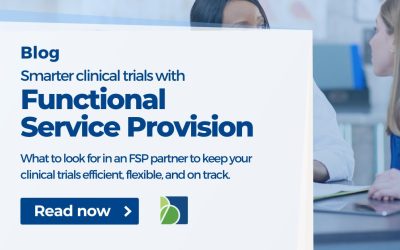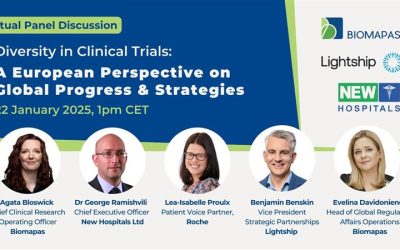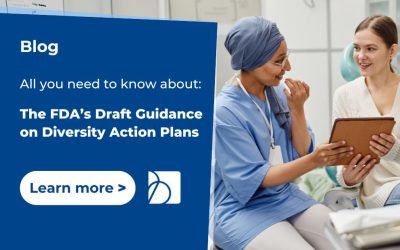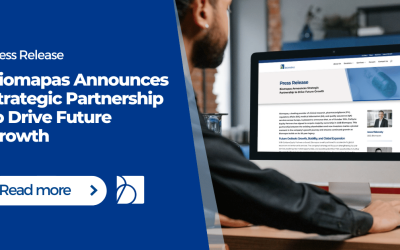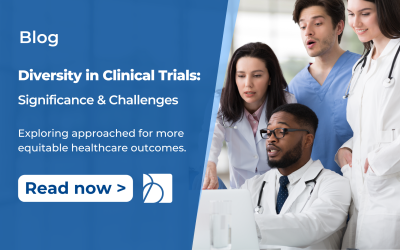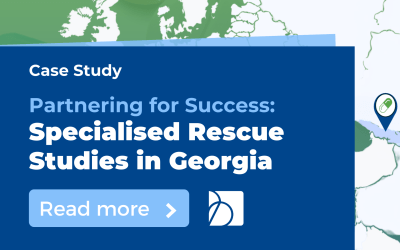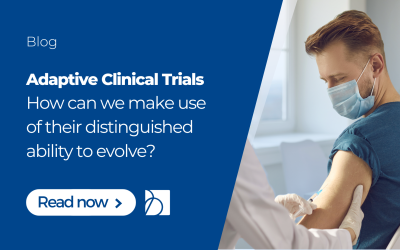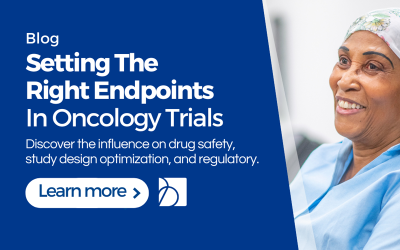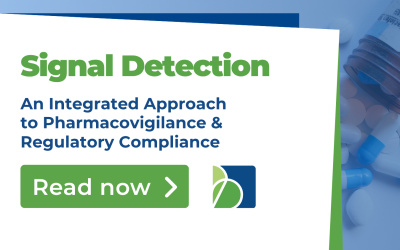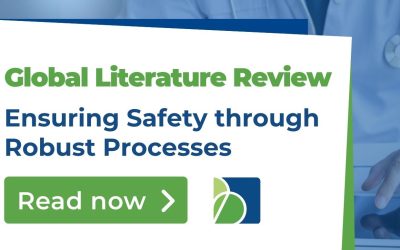The difficulties of recruiting in clinical trials, and particularly cancer patients in their early stages, can significantly obstruct the development of innovative treatments. There is an undeniable increase in demand for Early Phase Clinical studies in patients to enable informed decision-making. Patient recruitment might be hard in these Early Phase trials, given the limited direct therapeutic benefit, the occasionally arduous study procedures, and the rivalry for the same patient group amongst studies. Unfortunately, enrolling sufficient participants in a timely and scientifically sound manner to conduct early phase clinical trials, in general, is challenging. As a result, a large number of clinical studies fall short of their enrollment goals. Now add oncology as an additional difficulty. With all these hurdles, how do you improve patient recruitment in Early Phase Oncology Trials?
Pick A Patient-Centric CRO
For an early phase CRO to make a difference, we need to move beyond the expected availability of a state of the art facility and access to specialized diagnostics. Additionally, knowledge of and access to the right patient pool/demographics and relevant expertise in healthy volunteer and patient recruiting is now pivotal.
We include the patient’s voice into research design to accommodate patient needs ideally. If a study does not incorporate patient-centred objectives, recruiting becomes more difficult. And understanding patient requirements can influence how various types of clinical trials are marketed to patients and a good way to improve patient recruitment in Early Phase Oncology Trials.
The literature reveals a large disconnect between physicians’ and patients’ expectations regarding the success of early-phase trial therapy. This gap is largely definitely due to problems in the informed consent process, such as patients who do not understand the permission document completely. However, a new wave of research suggests that the complexity of the decision-making environment for terminally ill patients may result in a shift in values, making the risk-benefit ratio more manageable for cancer patients than for the general population.
The desire to aid future cancer patients, the desire to advance medical knowledge, the hope of a pleasant trial experience, and a refusal to give up are all legitimate reasons for cancer patients to enrol in a Phase I or II Clinical Trial.
On the other side, a lack of understanding about clinical trials among cancer patients may significantly impede recruiting. Additionally, participation in an early phase cancer study may be hindered by worries about one’s quality of life, the sense of being a guinea pig, and practical considerations about funds, employment, and family.
Maintain A Laser-like Focus On The Patient Journey.
While we continue to make educated selections based on factual data throughout the recruiting process, recognizing the emotional route and the patient perspective instils a more personal sensibility. Patient recruitment is challenging in oncology because individuals have varying cancer histories and capacity for physical and emotional coping with the disease. These are essential considerations for anyone considering clinical trials as a treatment option.
Finding patients at the ideal moment in the treatment pathway is not the only concern; once diagnosed with cancer, patients go on a therapeutic and emotional journey. Additionally, the treatment route depicts the evolution of the disease from diagnosis through remission, cure, or death.
Throughout the therapy process, you may monitor a patient’s emotions, attitudes, and views to determine how they express their feelings and where they seek assistance and information. Use this information to your advantage to improve patient recruitment in Early Phase Oncology Trials.
Numerous techniques are frequently used to elicit information on a patient’s emotional journey:
- Observation of social interactions
- Interviews with KOLs
- Family GPs/specialists
- Patient advocacy organizations
Consequently, you’ll have a greater knowledge of your patients’ coping mechanisms, their preferred modes of communicating their thoughts and worries, and their reactions to treatment regimens. Additionally, by listening to your patients, you may acquire vital audience insights that can inform your recruiting strategy. For example, it can aid in the development of materials that assist referring physicians in making informed decisions, like investigator materials, more comprehensible procedures, and improved tools for Digital Awareness.
Enhance Recruitment In Early Phase Oncology Trials By Educating Your Sites
Patient recruitment is invariably more efficient if enough due diligence is conducted on the kind and volume of patients treated by potential facilities. While this is a frequent procedure during the feasibility and site selection stages, it may not necessarily include an in-depth analysis of the patient profile and protocol needs.
Pay attention to the subtleties. Priming each location enables a comprehensive assessment of the most difficult areas of recruiting. Oncology medicines, for example, target individuals with certain genetic mutations or other characteristics. As a result, it is vital to ensure that sites properly grasp the patient profile and needs of their intended audience.
It necessitates a laser-like focus on the crucial characteristics of patient eligibility that investigators must grasp, to the point of being fairly specific about what they should be searching for in their patient records and practice database.
Hospital-Based Units to Access Large Patient Pools
A hospital-based unit provides access to a varied patient population with a range of difficult and rare diseases. Additionally, they can act as principal investigators in early phase units, which should be overseen by a specialized team that works closely with treating hospital physicians.
Patient recruitment is more constant and predictable as a result of the dedication of dedicated patient recruitment personnel, which is often found in an early phase facility. When a hospital and a patient recruiting team work together, the possibility of enticing new patients significantly improves. Patients are frequently referred through an existing referral physician network, are newly diagnosed, or are recruited from the hospital’s current database.
Consider designing outreach materials that provide essential trial information for physicians alone. For example, if your site has ties to regional hospitals or other healthcare professionals, you might use your network to spread the news about your study. Additionally, you can approach patients during their visit to a doctor’s office via firms that advertise at doctor’s offices.
Screening For Multiple Trials Concurrently.
If you are doing many trials for the same unmet need, you can save time and money by screening for all trials concurrently. If you work with a patient recruiting team, they may construct online pre-screeners and route patients depending on their location and replies to inclusion and exclusion criteria questions. Simultaneous screening for several trials can aid in connecting more interested patients with research opportunities while accelerating the recruiting process.
Meet Your Patients Online To Improve Patient Recruitment in Early Phase Oncology Trials
Digital advertising enables trial teams to engage with patients outside of site databases and to target those most interested with the most effective messaging. By scanning through the numerous news feeds online, digital patient recruiting benefits from reaching patients regardless of their location.
Utilizing digital tools to involve participants in clinical trials is a no-brainer. Marketers may employ interest and keyword targeting to connect with patients who are actively looking for treatment choices for their ailments.
By leveraging digital advertising, you can extend the window of opportunity for patients to join and share reminders. Instead of a research site sending only one email and a reminder to patients in its database regarding a trial opportunity, patients who view a landing page for your study but decline to enrol can be retargeted later with a second opportunity to enrol later on.
Prepare For Optimal Recruitment Efficiency
While it may be tempting to focus exclusively on novel strategies for accelerating patient recruitment for Early Phase Oncology Trials, we shouldn’t overlook established best practices that apply to all clinical trials.
For example, Trial Design & Study Protocols have a substantial influence on recruitment strategy and, when done correctly, may drive recruitment; they cannot be simply amended once a study begins. As such, ensure that all stakeholders are treated equally in the process, that scientific relevance is maintained, that protocol complexity is kept to a minimum, and that you implement realistic eligibility criteria.
Given the final reliance on sites to meet recruiting objectives, it makes sense to concentrate your efforts on developing strong relationships with your sites. They aid in ensuring trial feasibility, accurate site identification/selection, and the establishment of realistic metrics and milestones.
Concentrating on excellent communication can assist you in completely engaging an audience and comprehending the viewpoints of patients. Without a thorough understanding of stakeholder needs, engagement and effective enrollment are impossible. By employing a data-driven strategy, you can unearth these insights and use them to bring compelling content directly to the doorsteps of your prospective patients.



